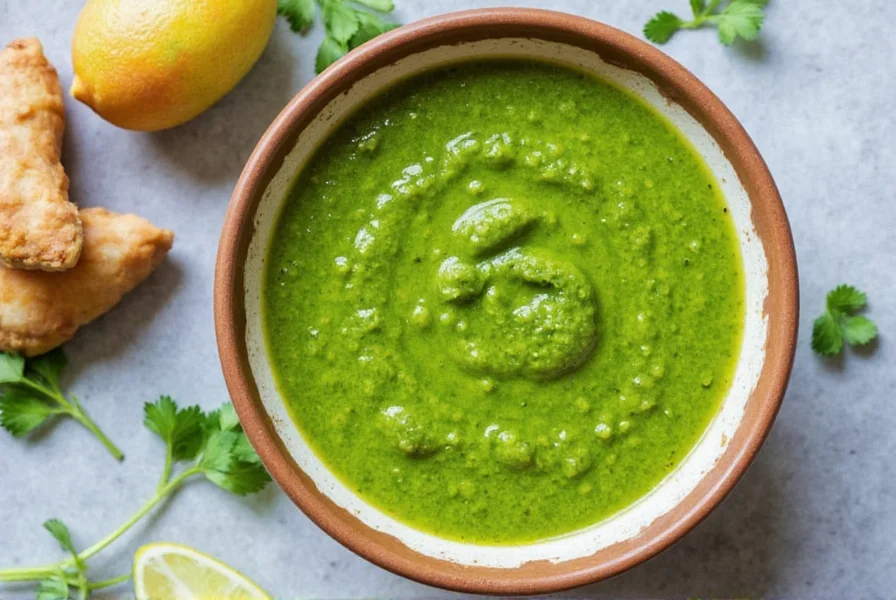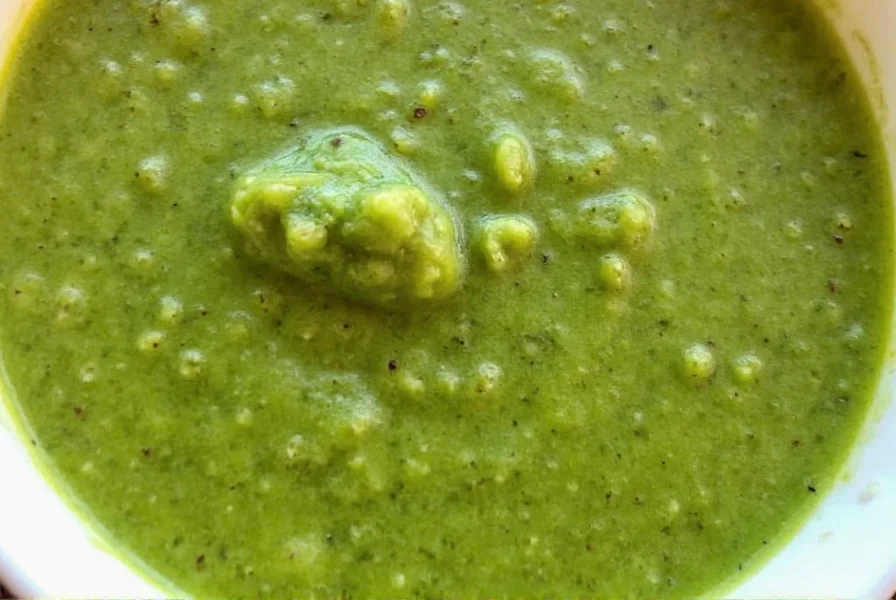Coriander leaves chutney, known as dhania chutney in North India and malli podi in Tamil, forms the backbone of countless Indian breakfasts and snacks. Unlike Western pesto, this Indian staple maintains a coarse texture that preserves the fresh herb flavor while delivering complex layers when paired with complementary ingredients.
The Essential Coriander Leaves Chutney Formula
Creating authentic coriander chutney requires understanding the precise ingredient ratios that prevent common pitfalls like bitterness or separation. The foundation consists of:
| Core Ingredient | Function | Proportion |
|---|---|---|
| Fresh coriander leaves | Primary flavor base | 2 cups packed |
| Green chilies | Heat element | 1-2 (adjust to taste) |
| Lemon juice | Acidity balance | 1 tbsp |
| Roasted cumin powder | Earthy depth | 1/2 tsp |
| Salt | Flavor enhancer | To taste |
Many home cooks make the mistake of adding excessive water during blending, which dilutes flavor and causes separation. The secret to thick, emulsified coriander mint chutney lies in using the moisture from the leaves themselves. If absolutely necessary, add only 1-2 teaspoons of water.
Step-by-Step Preparation Guide
Follow this professional technique for vibrant green chutney that stays fresh for days:
- Wash 2 tightly packed cups of coriander leaves in cold water, removing thick stems
- Pat leaves completely dry with a clean kitchen towel (moisture causes spoilage)
- Combine leaves, 1 green chili, 1 small garlic clove, 1/2 inch ginger, and 1/4 cup mint leaves in blender
- Add 1/2 tsp roasted cumin powder, 1 tbsp lemon juice, and salt to taste
- Pulse in short bursts until coarsely chopped (avoid over-blending)
- Scrape sides and pulse again until uniform but still slightly textured

Variations Across Indian Regions
Regional adaptations showcase India's culinary diversity while maintaining the core coriander chutney identity:
- South Indian style: Includes roasted lentils for thickness and coconut for sweetness
- Gujarati version: Adds raw mango for extra tanginess during summer months
- Punjabi adaptation: Incorporates roasted peanuts for nutty depth
- Vegan restaurant style: Uses date paste instead of sugar for natural sweetness
For those seeking coriander chutney without coconut (common in North Indian preparations), simply omit coconut and increase mint leaves by 1/4 cup to maintain volume. This variation works particularly well with spicy dishes that need cooling contrast.
Storage Techniques for Maximum Freshness
Proper storage transforms coriander leaves chutney from a single-meal condiment to a week-long kitchen staple. Follow these professional methods:
- Transfer to an airtight glass container immediately after preparation
- Create a protective oil layer by pouring 1/8 inch of mustard oil on top
- Refrigerate below 40°F (4°C) - lasts 5-7 days versus 2-3 days unstored
- For freezing: Portion into ice cube trays, then transfer to freezer bags (keeps 3 months)
Revive separated chutney by stirring vigorously or adding 1/2 tsp lemon juice and re-blending briefly. Never add water to refresh, as this accelerates spoilage.
Perfect Pairings and Culinary Applications
While traditionally served with dosa and idli, creative cooks use coriander chutney in unexpected ways:
- Mix with yogurt for instant raita that complements biryani
- Spread on sandwiches instead of mayonnaise for vibrant color
- Use as marinade base for chicken or paneer (adds herbal notes)
- Stir into soups for instant flavor boost without cream
- Drizzle over roasted vegetables as finishing sauce

Troubleshooting Common Issues
Address these frequent coriander chutney problems with professional solutions:
- Bitter taste: Caused by over-blending stems - always remove thick stems and use young leaves
- Separation: Indicates excess water - blend drier ingredients first, add liquid sparingly
- Dull color: Results from oxidation - always add lemon juice before blending
- Weak flavor: Use freshly harvested coriander - store-bought often lacks potency
- Too spicy: Balance with 1/2 tsp sugar or extra lemon juice, not dairy
Nutritional Profile and Health Considerations
A 2-tablespoon serving of traditional coriander leaves chutney contains approximately:
- 15 calories
- 1g dietary fiber
- 110% of daily vitamin K requirement
- 60% of daily vitamin A requirement
- Natural antioxidants from fresh herbs
Unlike commercial versions, homemade coriander mint chutney contains no preservatives or added sugars. The vitamin K content supports bone health, while the chlorophyll in fresh coriander leaves aids digestion. For those monitoring sodium intake, reduce salt by half and compensate with extra lemon juice.
Frequently Asked Questions
Can I make coriander leaves chutney without mint?
Yes, traditional South Indian coriander chutney often contains only coriander leaves, green chilies, lemon juice, and salt. Mint adds complexity but isn't essential. For a pure coriander flavor profile, use 3 cups packed coriander leaves instead of the standard 2 cups with mint.
Why does my coriander chutney turn brown quickly?
Browning occurs due to oxidation when leaves are over-blended or exposed to air. Prevent this by adding lemon juice before blending, using a stainless steel blender (not plastic), and storing with an oil layer on top. Always use freshly harvested coriander leaves for maximum chlorophyll retention.
How can I make coriander chutney thicker for dipping?
Add 2 tablespoons of roasted chana dal (split Bengal gram) while blending. The lentils absorb excess moisture while adding protein and creating the perfect dipping consistency without altering the fresh herb flavor. For gluten-free thickening, use roasted peanuts instead.
Is coriander chutney suitable for weight loss diets?
Yes, authentic coriander leaves chutney contains only 15 calories per serving with no added fats or sugars. Its high fiber content promotes satiety, and the vitamin K supports metabolism. Avoid versions with added coconut or peanuts if strictly monitoring calories, as these increase fat content significantly.
What's the best way to revive leftover chutney?
Stir vigorously to recombine separated ingredients, then add 1/2 teaspoon fresh lemon juice and pulse briefly in the blender. Never add water, as this accelerates spoilage. For frozen portions, thaw overnight in the refrigerator rather than at room temperature to preserve texture and flavor.











 浙公网安备
33010002000092号
浙公网安备
33010002000092号 浙B2-20120091-4
浙B2-20120091-4